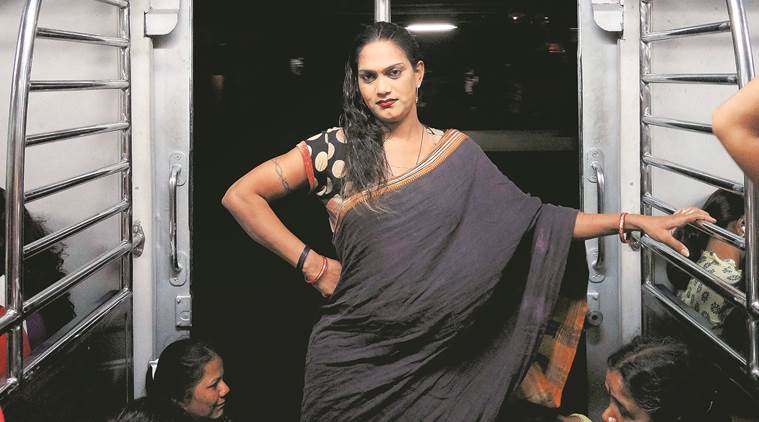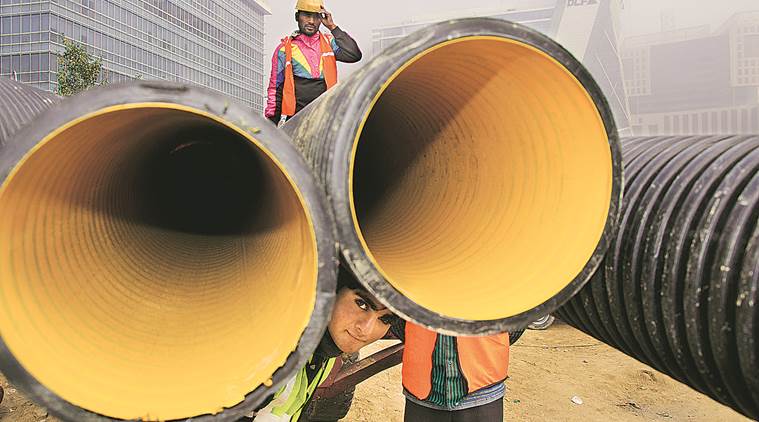Discovery of India
An exhibition sheds light on the changes, from landscape to lifestyle, which have redefined the idea of India after Independence
 Photograph by Anushree Fadnavis
Photograph by Anushree Fadnavis
In one photograph, Anita, a transgender, strikes a model-like pose in a black sari at the door of the women’s compartment of a Mumbai local. Adorning her back is the tattoo of an angel, which she believes protects her at all times. In another frame, a woman channels her inner leopard — if her appearance is anything to go by. She is dressed in a top and a scarf printed with the spots of the wild cat.
These photographs, shot by 29-year-old photojournalist Anushree Fadnavis on her mobile phone since 2013, reveal a deep fascination with the ladies compartment of Mumbai’s local trains. Part of her series Train Diaries, which is a hit on Instagram, these photographs form her exhibition, “A Million Mutinies Later – India at 70”, at Ffotogallery’s Turner House Gallery and The Angel, in Cardiff, Wales. The exhibition is on till July 22.
“A lot of women use their time during their commute on the train very creatively and almost become like a second family after getting to know each other. They knit, do crochet, cut vegetables, apply henna on their their hands, and even get dressed here. In the men’s compartment, conversations are about work. In the women’s cabin, the chitter chatter is fuelled by emotions. Many a times, I have cried, become angry and let go of a lot of emotions in the women’s compartment,” says Fadnavis.
Held in partnership with the Nazar Foundation/Delhi Photo Festival for UK-India Year of Culture 2017, the exhibition offers a bird’s eye view of India since Independence. Nineteen artists, including Bharat Sikka, Javed Iqbal and Arko Datto, have investigated the everyday revolutions that have transformed the social, cultural and political fabric of the nation through their lens-based art, such as photographs, films and videos. “Looking at the last 70 years, the economic liberalisation of India has brought a range of changes. We wanted to explore the different themes of representing India, which is very dynamic. Usually, one looks at a revolution to define a nation. We were looking at the million small revolutions taking place across the country, whether in the community, nation or its people,” says Anshika Varma, one of the curators.

Through street photography, Delhi-based photographer Monica Tiwari has documented the rise of Gurgaon, its urbanised setting surrounded by the remnants of its rural past. A group of Haryanvi women, with faces hidden under their pallu, are seen dancing to musical beats. “She has ended up documenting a space that is at that moment of transition. It is not a village or a town and is on its way of becoming an urban city,” says Varma. A line of cows stands tall before one of Gurgaon’s enormous glass skyscrapers, which are a storehouse for the MNC offices mushrooming within its commercial hub, Cyber City. “Revolution happens in many forms, it is not merely shouting ‘Inquilab Zindabad’. It might mean migrating from smaller places like villages to cities. That itself is a revolution, where one goes ahead and explores the horizons, and migration is a sign that things are changing. This ambition that has come is representative of India’s youth,” she adds.
Artist duo Yashaswini B Raghunandan and Ekta Mittal’s project “Behind the Tin Sheets”, comprises three films on the migration of labourers from across the country to Bangalore for the metro construction. Sikka’s series Matter offers a contemplative look through the landscape view of a mountain terrain enveloped in snow, reminiscent of the Himalayas, shots of a horse with trees behind and of a bandbajawallah, alongside the close-up of a CD. “He looks at the transition and change all over the world and how we come from the same matter. You can go from landscape to people to cosmos but it will still remain matter,” says Varma.





- 01
- 02
- 03
- 04
- 05






















